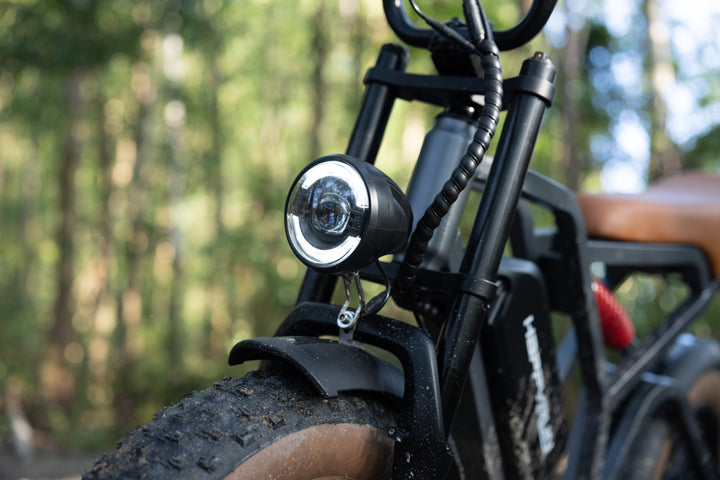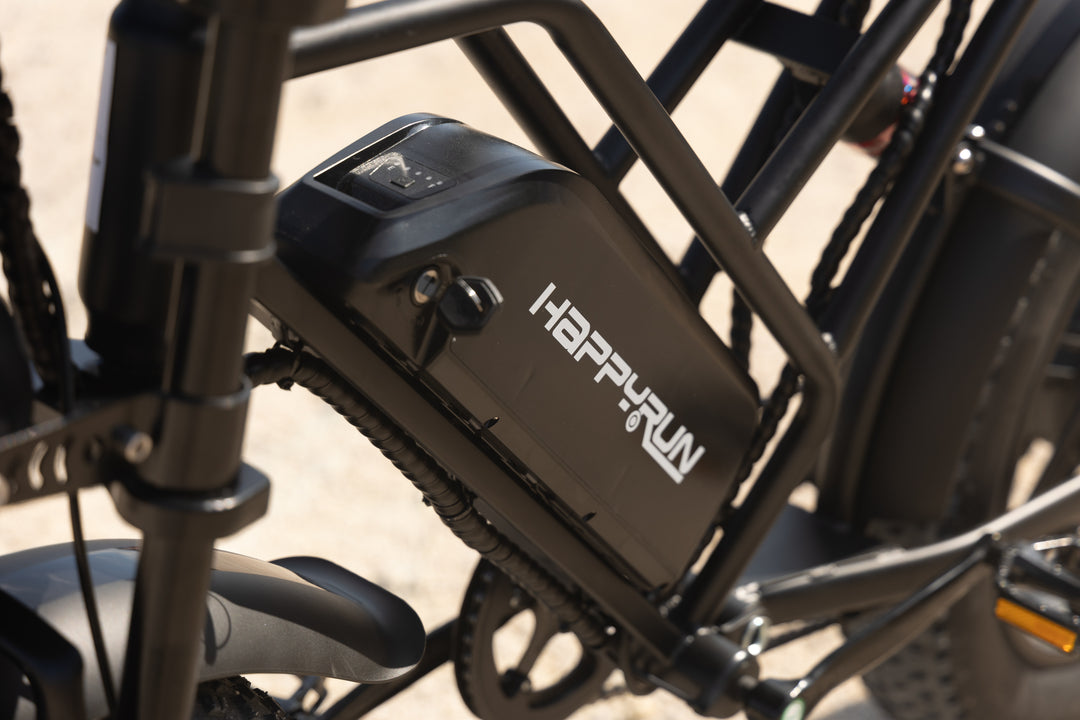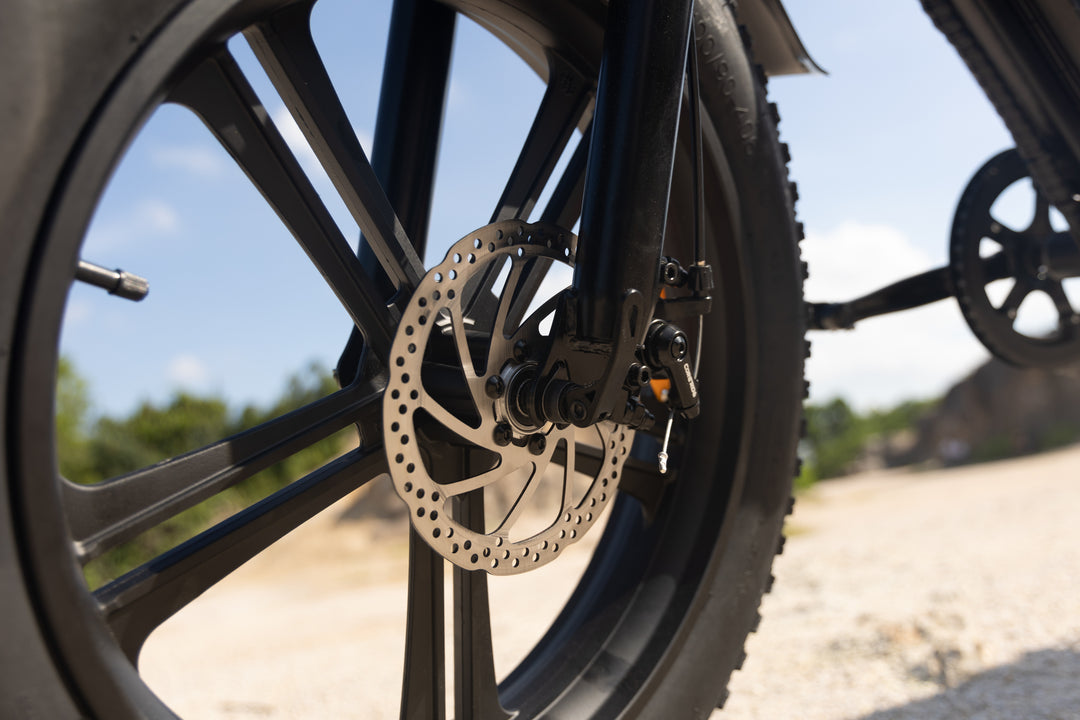
Affordable Ebike vs. Traditional Bike: Which Is Better?
An affordable e-bike offers motor-assisted riding, making commuting easier, while a traditional bike is lightweight and requires full pedaling effort. E-bikes are ideal for longer rides and hilly terrain, whereas traditional bikes are cost-effective and maintenance-friendly. The choice depends on budget, fitness goals, and riding needs.
In this article, we will conduct a comparative analysis of all-terrain ebikes and traditional bikes, taking into account factors like speed and effort, cost considerations, and the fitness benefits associated with each.
Main Differences Between Mountain Ebikes & Tradicional Bikes
Mountain e-bikes have a motor for assisted pedaling, making uphill climbs easier, while traditional mountain bikes rely solely on rider effort. E-bikes offer greater speed and endurance, ideal for long trails, whereas traditional bikes provide more control and a natural riding experience for skilled cyclists.
In this section, we'll delve into the key disparities that set these two cycling options apart, shedding light on the factors that influence your riding experience.
- Handlebar:
All-terrain electric bikes often feature a more substantial and upright handlebar design to accommodate the additional controls for the electric motor and display. Traditional bikes typically have a simpler, narrower handlebar design, ideal for a more aerodynamic riding position.
- Materials:
Ebike frames are generally designed to be sturdy and robust to support the weight of the motor and battery. They can be made from various materials, including aluminum and steel.
Traditional bikes are available in a wide range of materials, with options like aluminum, steel, carbon fiber, and titanium, offering various combinations of weight, durability, and price.
Essential Components of Electric Bikes
- Battery:
The most distinctive feature of ebikes is their battery, which powers the electric motor. The battery's size and capacity can vary, affecting the range and power of the mountain ebike. Traditional bikes do not have batteries; they rely solely on human power for propulsion.
- Gearing:
Electric bikes often come with a wider range of gears, enabling riders to comfortably navigate various terrains. The electric motor can compensate for the added weight and resistance. Traditional bikes have a range of gearing options depending on their intended use, from single-speed city bikes to multi-speed mountain and road bikes.
- Motor:
Affordable ebikes are equipped with an electric motor that provides various levels of assistance, either through a throttle or pedal-assist system, depending on the model.
Traditional bikes do not have a motor, relying solely on human power for propulsion.
These differences highlight the contrasting features and capabilities of mountain ebikes and traditional bikes, offering distinct riding experiences suited to individual preferences and needs.
What Would You Use Each Bike For?
E-bikes are ideal for commuting, long rides, and tackling steep terrain with ease. Traditional bikes are great for fitness, lightweight maneuverability, and low-cost transportation. E-bikes suit riders looking for speed and assistance, while traditional bikes are better for exercise and simplicity.
If you’re looking for a fast bike, that allows you to arrive on time without feeling exhausted, an all-terrain electric bike is the perfect choice for you. On the other hand, if you just want a simple bike you can use from time to time to get around, perhaps a traditional bike is best for you.
Depending on the use you’ll give to your bike, other factors such as speed, motor power, and accessories come into play.
Unveiling the Speed: A Review of the Happy Run G60 Electric Bike! - YouTube
Speed & Effort: Electric Ebikes vs. Traditional Bikes
E-bikes can reach speeds of 20-28 mph with motor assistance, reducing rider effort, especially on hills. Traditional bikes require full pedaling power, making them better for fitness but slower overall. E-bikes provide effortless speed, while traditional bikes demand endurance and strength.
- Speed
Electric motorbikes, equipped with electric motors, provide an extra boost that allows riders to travel at higher speeds with less physical exertion. Most mountain ebikes can reach speeds of 20 to 28 miles per hour, depending on local regulations.
Traditional bikes rely solely on pedal power, and your speed is limited by your own physical capabilities. Typical speeds for traditional bikes range from 10 to 20 miles per hour.
- Effort
Mountain electric bikes are an excellent choice for riders who want to reach their destination quickly without breaking a sweat. The electric assist can make uphill climbs and longer distances more manageable.
Traditional bikes are known for their health and fitness benefits, as they require consistent pedaling effort, promoting cardiovascular health and overall fitness. If you enjoy a workout, a traditional bike may be the better option.
Cost Considerations: Affordable Ebikes vs. Traditional Bike
Affordable e-bikes cost $500-$2,000, while traditional bikes range from $200-$1,500. E-bikes have higher maintenance costs due to batteries and motors, while traditional bikes require minimal upkeep. Over time, e-bikes save on commuting costs but need battery replacements, whereas traditional bikes have fewer ongoing expenses.
Cost is a significant factor when choosing between an electric bike and a traditional bike. Consider the following financial aspects:
- Initial Cost
Mountain ebikes tend to be more expensive upfront due to the added cost of the electric motor and battery. Prices can range from a few hundred to several thousand dollars, depending on the brand and features.
Traditional bikes, on the other hand, are generally more affordable, with a wide range of options to fit different budgets. Over time, traditional bikes tend to become more expensive compared to affordable ebikes, due to the amount of maintenance needed.
Since traditional bikes are made with standard-grade materials that degrade over time, you can end up paying a lot more than what you expected for a traditional bike.
Preventing Ebike Theft
Protecting your ebike from theft is essential to ensure your investment and peace of mind. In this section, we'll share some valuable tips to help you keep your ebike safe and secure.
Invest in a Quality Lock
The foundation of ebike theft prevention starts with a reliable lock. Opt for a high-quality, hardened steel U-lock or a heavy-duty chain lock. These locks are more resistant to cutting and tampering, making it significantly harder for thieves to break through. Avoid cable locks, as they are less secure and easier to compromise.
Secure Both Wheels
Thieves often target the front wheel of ebikes, which are usually quick-release. To prevent this, use a secondary lock or a cable to secure both wheels to the frame. This extra step will deter potential thieves and make it more difficult for them to steal your ebike.
Choose the Right Parking Spots
Where you park your ebike can greatly affect its security. Whenever possible, park in well-lit, high-traffic areas. Use designated bike racks or secure locations provided by your city or workplace. Avoid leaving your ebike in secluded or poorly lit areas where thieves can work unnoticed.
Final Words
The choice between an affordable ebike and a traditional bike ultimately comes down to your personal preferences, needs, and lifestyle. If you value speed, convenience, and a helping hand on long rides, a mountain ebike may be the ideal choice.
However, if you enjoy the physical challenge, fitness benefits, and lower initial costs, a traditional bike could be a better fit. Consider your priorities and priorities when making this important decision, and remember that both options can offer an enjoyable and eco-friendly way to explore the world on two wheels.



































Leave a comment